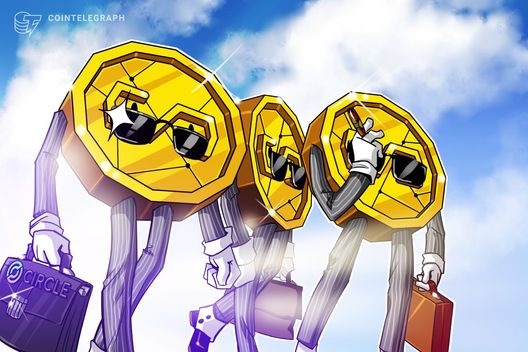NFTs and crypto provide fundraising options for breast cancer awareness
5 min read
The hype around nonfungible tokens (NFTs) may be fading, yet a number of organizations continue to implement Web3 initiatives. Nonprofit organizations and activists, in particular, have begun implementing nonfungible token projects to help fundraise and generate awareness for certain causes.
While these methods are still new, NFT projects for philanthropy have been met with relative success. A recent report from crypto donation platform The Giving Block found that nonprofits using The Giving Block received more than $12.3 million dollars in cryptocurrency donations from NFT-related charitable giving initiatives in 2021. The report further noted that charitable organizations using NFTs are presented with the opportunity to connect with younger donor demographics while diversifying donation methods.
NFT projects for Breast Cancer Awareness Month
Benefits such as these can be especially helpful for raising awareness around life-threatening diseases. number of breast cancer-focused organizations have started implementing NFTs this October to highlight Breast Cancer Awareness Month.
For example, Shaney jo Darden, founder of the Keep A Breast Foundation (KAB) — a California-based nonprofit that aims to reduce breast cancer risk — told Cointelegraph that KAB focuses on engaging with younger generations to bring attention to breast cancer. She said:
“Even though women over the age of 40 are typically diagnosed with breast cancer, early detection can result in a 98% survival rate. Given this, KAB aims to generate awareness about breast cancer through encouraging and fun ways, like using NFTs to educate young women.”
Darden said that last year, KAB hosted an exhibition in the CryptoVoxels metaverse to raise money for breast cancer research. “We wanted to do an event in the Metaverse as opposed to conducting a membership drive or gala, since this opens access globally,” she noted. Based on the success of this, Darden explained that she wanted to continue to implement Web3 initiatives — especially those involving artwork created by women — to generate awareness around breast cancer. Most recently, Darden partnered with the NFT project NFTitties to raise funds for KAB’s breast cancer prevention and educational initiatives.
Carlota Dochao Naveira, founder of NFTitties, told Cointelegraph that the women-led project celebrates women, art and breasts to raise funds to fight breast cancer. “Emerging artists and activists were invited to submit an artwork representing breasts, following a set of visual guidelines. The artworks were then vetted and, if selected, included in the first release of NFTitties,” she said.
According to Dochao Naveira, almost 30 NFTs were sold during the first week the project launched on Oct.1. She further pointed out that NFTitties has helped onboard more women into the Web3 ecosystem since the initiative encourages women artists, activists and others to submit their artwork to be presented as nonfungible tokens.
Other organizations are implementing different forms of NFTs to educate individuals on this type of cancer that affects one in eight women. For example, the women’s handbag designer Vera Bradley announced on Oct. 3 that it will be donating almost 100% of the proceeds generated from its fashion NFT drops to The Vera Bradley Foundation for Breast Cancer.
Jennifer Bova, vice president of marketing at Vera Bradley, told Cointelegraph that to date, the foundation has raised and donated more than $38 million to support critical advancements in breast cancer research. Yet, Bova noted that Vera Bradley has started focusing on marketing in the Metaverse to attract new users by attaching philanthropic utility to its digital and physical fashion NFTs. “Through its NFT PFP backgrounds, Vera Bradley hopes to drive awareness for fundraising, as well as female-led conversations and initiatives in Web3,” she said.
We’re proud to announce through @TheGivingBlock, we’re now accepting #DOT donations to support lifesaving research in all areas of #breastcancer, from basic biology to prevention to treatment & to survivorship. Donate @Polkadot and 80+ other #cryptos today https://t.co/XoT7atRdV5 pic.twitter.com/JgTYBx1JkQ
— Susan G. Komen (@SusanGKomen) August 10, 2022
It’s also notable that Susan G. Komen, a leading breast cancer research foundation, recently began accepting crypto donations to enable cryptocurrency holders to give back. Michelle Strong, vice president of marketing strategy at Susan G. Komen, told Cointelegraph that about a year and a half ago, the organization began receiving requests from individuals interested in donating cryptocurrency:
“We implemented this feature nearly a year ago with the help of The Giving Block. This has driven interest from both current and new donors, as crypto donations have opened doors to those who haven’t been able to give before but were interested in being charitable.”
Based on the successful implementation of crypto donations over the past year, Strong mentioned that Susan G. Komen will be incorporating crypto donations, along with other digital donations received during the week of Oct. 9–15, to fund the organization’s metastatic breast cancer excellence in research award.
“Oct. 13 this year is ‘metastatic breast cancer’ day, which is the most advanced stage of the disease. Susan G. Komen is giving out the excellence in research award to bolster investment around this specific area of research and cryptocurrency is another great way to support this,” she remarked.
Web3 initiatives are helpful, but not necessarily better
While the use of NFTs and crypto donations to support breast cancer is innovative, these initiatives are still only helpful ways to bring attention to certain causes. For instance, Bova pointed out that driving awareness and funds for breast cancer research in the Metaverse is not necessarily better but rather an additive resource to tap into new donors and volunteers. Echoing this, Darden mentioned that incorporating NFT projects with KAB enables the organization to diversify its funding, yet it hasn’t proven to be a better solution in comparison to traditional fundraising mechanisms:
“Many NFT projects die out over time, so KAB is taking a risk by being a part of certain projects. However, NFTitties has a clear goal and beautiful art that resonates with the KAB community.”
Indeed, even though there are a number of risks associated with NFT projects, nonfungible tokens remain appealing when it comes to increasing user engagement and interest.
“Susan G. Komen is happy to benefit from NFT projects that others are able to pull together. We are currently in conversation with an NFT project that aims to benefit our organization,” Strong noted.
Yet, it’s also important to point out that, in addition to risks, there are challenges associated with implementing such projects.
According to Dochao Naveira, targeting traditional NFT investors can be difficult when it comes to women-led initiatives “There tends to be a bro-culture in the Web3 space that doesn’t care as much about certain projects. There can also be difficulties with helping mainstream users set up a MetaMask wallet,” she said.
But, as time progresses, Web3 projects aim to incorporate new features to help ease onboarding and educate new users. For example, Carmen Toal, CEO and co-founder of Sprkl NFT Studios — a platform working with nonprofits and individuals to implement NFT technologies — told Cointelegraph that mainstream users typically need more guidance when it comes to participating in NFT projects.
As such, she mentioned that Sparkl NFT Studios incorporates familiarities with charitable NFT initiatives. “We sometimes include a ‘donate now’ button that is not directly attached to an NFT,” she said.
Most recently, Sprkl NFT Studios partnered with the National Breast Cancer Foundation, Inc. (NBCF) on an NFT artwork fundraising campaign for Breast Cancer Awareness Month. Candice Hensley, senior manager of strategic partnerships at NBCF, further told Cointelegraph that working with Sprkl NFT Studios is part of the organization’s strategic plan to diversify its funds.







